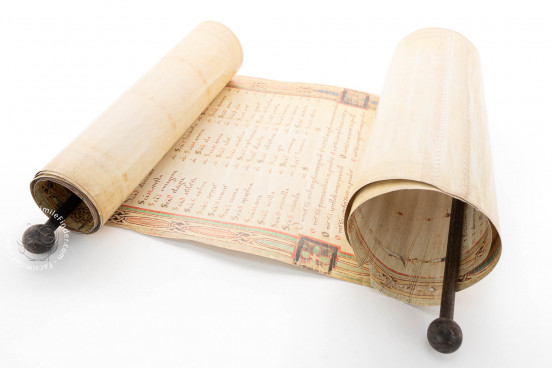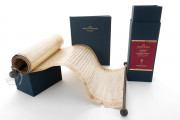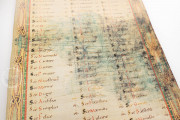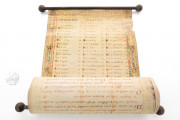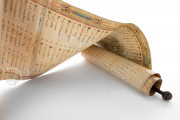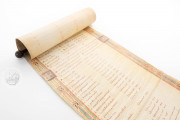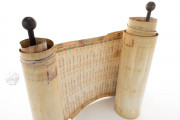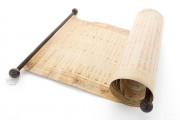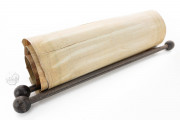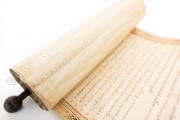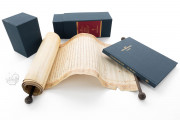The Lorsch Rotulus, now preserved at the City and University Library of Frankfurt, is a truly exceptional artifact indeed. Not only is the viewer amazed by its outer appearance – it is the only liturgical book roll to reach us from the Carolingian period – but also by the astoundingly vast number of Saints mentioned in the Litanies (534), and by its opulent decorative cycle.
The Lorsch Rotulus: a Masterpiece of Carolingian Art
This manuscript was produced during the third quarter of the ninth century in the scriptorium of Lorsch. Scholars have found clues to its origin not only in the style of the colorful interlaced decorations filling the borders over the entire length of the roll, but also in pride of place taken within the Litany by Nazarius, the patron saint of Lorsch. The long sequence of Saints' names was penned on the front side of the Rotulus in three columns, some of the names being highlighted in gold and silver letters. The four texts placed on the rotulus's reverse side (a Votive Mass, Mass prayers, a list of treasures and books of the Abbey dedicated to Christ, and an Officium Stellae) were added later, during the mid-eleventh century.
The Gift of a King to Lorsch Abbey
Nowadays, the Lorsch Rotulus is kept in Frankfurt, where in 1994 its symbolic '1200th anniversary' was celebrated. Since Charlemagne's son, Louis II the German, and his relatives are among the names mentioned in the Litany, the rotulus has an even greater importance for the city. Louis himself, in fact, founded the Abbey of the Redeemer and it is likely that the manuscript was once among the most important items kept in this house of the Carolingian Palatinate in Frankfurt.
We have 1 facsimile edition of the manuscript "Lorsch Rotulus": Lorscher Rotulus facsimile edition, published by Akademische Druck- u. Verlagsanstalt (ADEVA), 1994
Request Info / Price
